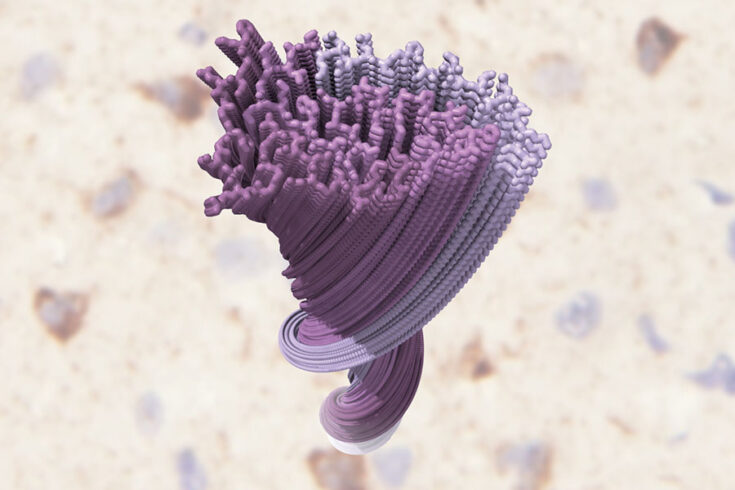Scientists have determined the structure of the molecule associated with amyotrophic lateral sclerosis (ALS) and multiple other neurodegenerative diseases.
The molecule, known as TDP-43 (TAR DNA-binding protein 43), is thought to play a key role in the pathology of several diseases.
Researchers at the Medical Research Council Laboratory for Molecular Biology (MRC LMB) say the discovery could enable targeted development of new medical interventions and diagnostic tests.
Building on important research
ALS is the most common form of adult-onset motor neuron disease and is characterised by the deterioration of neurons responsible for controlling voluntary muscle movements.
There is no cure for ALS and no effective treatment to halt or reverse disease progression.
While the cause of ALS is unclear, previous research has shown that the abnormal clumping of TDP-43 into aggregates, in nerve cells is the defining pathological hallmark of ALS.
Changing our understanding
Scientists have been aware of the importance of TDP-43 for some time. However, the potential to translate this information into treatments has been limited as, until now, the molecular structure of the TDP-43 aggregates has been unknown.
Now, the team of scientists at MRC LMB have used cryo-electron microscopy to determine the first molecular structure of TDP-43 aggregates extracted from the donated brains of two individuals who had ALS.
The team discovered several previously unseen structural features, such as a filamentous double-spiral-shaped fold. This showed that TDP-43 aggregates extracted from the brain are distinct from previous studies that attempted to recreate TDP-43 aggregates in a test tube.
Supporting diagnosis and treatment
These distinct structural features mean that TDP-43 in the brain is likely to interact uniquely with diagnostic tools and drugs.
This could explain why current diagnostic compounds based on analogous proteins associated with other neurodegenerative diseases are poor at diagnosing ALS.
The study presents new possibilities for the development of treatments using compounds that specifically target structural features of TDP-43, including those responsible for aggregation.
Finding better ways
Dr Benjamin Ryskeldi-Falcon, from the MRC LMB, who led the study, said:
There are no diagnostics or therapeutics for ALS and other diseases associated with TDP-43 and the first step towards developing these is gaining a better understanding of TDP-43 itself.
Now that we know what the structure of aggregated TDP-43 looks like and what makes it unique, we can use it to find better ways to diagnose the disease early.
We’re excited to be able to use this blueprint in our lab to start identifying compounds that bind to unique sites on TDP-43, with the aim of identifying potential therapies for further study.
I would especially like to thank the people with ALS, and their families, who donated their brains to research to help us gain a better understanding of this terrible disease.
Adopting new approaches
Dr Jo Latimer, head of neurosciences and mental health at the MRC, which funded the study, said:
These findings are an important and much needed contribution to our understanding of ALS and associated neurodegenerative diseases.
Identifying the structure of a protein that is known to contribute to disease is the first step towards understanding its role in the development of disease.
Currently, the cause of ALS is unclear but understanding the structure of TDP-43 will redefine how scientists think about disease progression and enable them to adopt entirely new approaches to developing therapies and diagnostics.
The research was funded by MRC and also received support from:
- Alzheimer’s Research UK
- Japan Agency for Medical Research and Development
- Japan Science and Technology Agency.

